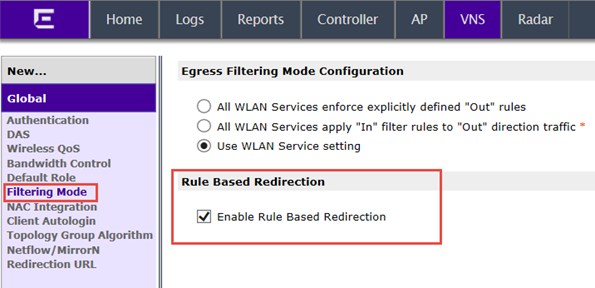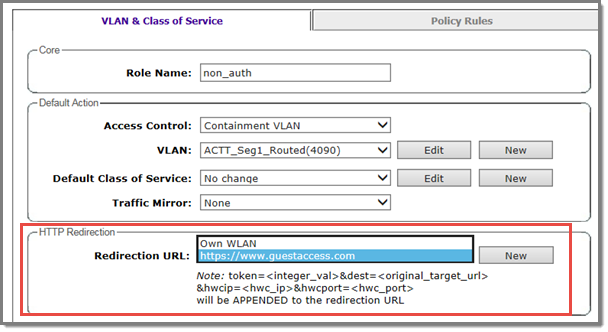You can now configure policy rules to explicitly redirect traffic to the captive portal definition assigned to the role, regardless of authentication status. Rule-based Redirection applies to HTTP and HTTPS traffic, and explicitly defines when traffic will be redirected. In previous releases, redirection automatically redirected an un-authenticated client to an ECP when a deny action, on HTTP(S) traffic, occurred.
Rule-based redirection requires explicit enablement. For new installations, Rule-based Redirection is enabled by default. For upgrades from releases prior to v10.11, ExtremeWireless preserves the previous captive portal redirection method of triggering redirect off denied HTTP/HTTPS for non-authenticaticated roles.

Rule-based Redirection is explicit when the redirection flag is enabled and a rule is defined for redirection. The redirection destination can be defined on the role or as part of a WLAN Service configuration. If a redirection destination is not configured, the default destination is 'Own WLAN', which indicates the WLAN of the device. Redirection is allowed on any port.


 Print
this page
Print
this page Email this topic
Email this topic Feedback
Feedback